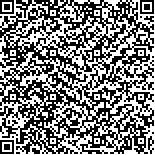下载中心
优秀审稿专家
优秀论文
相关链接
摘要

2. 中国气象局 中国遥感卫星辐射测量和定标重点开放实验室, 北京 100081
传统的场地辐射定标方法由于定标样本少,难以覆盖遥感器动态范围,且不能发现仪器辐射响应是否存在非线性特性。针对这一问题,本文提出了基于多种亮暗等级的地球稳定目标(盐湖、沙漠和海洋)的卫星传感器宽动态非线性辐射定标方法。该方法以MODIS和NCEP数据产品作为稳定目标的地表特性、大气状况的先验知识库,利用大气辐射传输模型计算的多个稳定目标的大气层顶辐射值为定标基准,以二次多项式为定标方程,实现宽动态的非线性辐射定标,并以Aqua/MODIS观测值作为参考,对定标基准的精度进行评估。结果显示,对于反射太阳波段,辐射传输模型的计算值与MODIS观测值间的偏差均值在2%以内。最后,以气象卫星遥感器MERSI为例,基于2014年在稳定目标上空获取的大量定标样本,对其反射太阳通道的辐射响应特性进行研究,从而确定辐射定标方案和辐射定标方程的系数,然后采用敦煌试验场的同步实测数据对定标结果进行验证。结果表明,除了940 nm的水汽强吸收通道,其他通道的定标精度基本在5%以内。
In order to obtain quantitative information from satellite measurements, the satellite radiometer must first be calibrated. Calibration is a critical step to ensure data quality and to meet the needs of quantitative remote sensing in a broad range of scientific applications. One of the least expensive and increasingly popular methods of on-orbit calibration has been the use of pseudo invariant calibration sites. However, most of the researchers are tend to use one of these sites to monitor the multi-temporal stability of satellite sensors using time series analysis. A wide dynamic absolute calibration method by using multiple stable earth targets is presented here.
This method relies on calculated Top-Of-Atmosphere (TOA) radiances over bright desert and salt lake sites as well as dark ocean targets. These simulated radiances represent the “reference” and are done using the 6S radiative transfer code with MODerate-resolution Imaging Spectroradiometer (MODIS) products and National Centers for Environmental Prediction (NCEP) reanalysis data for surface reflectance, aerosol optical depth, ozone amount and water vapor load estimation. When associating the simulated radiances with the sensor observed Digital Number (DN) using quadratic polynomial, the calibration coefficients can be obtained. The accuracy of the calibration results are determined by the accuracy of the “reference”, and this “reference” accuracy are assessed through using MODIS L1B data, which is characterized by high calibration accuracy (<2%), during one year period. Then, this method are applied to Medium-Resolution Imager (MERSI) onboard the second Chinese Polar Orbital Meteorological Satellite of FY-3A and FY-3C to study the radiometric response characteristics, so that the best calibration strategy can be determined. Finally, the determined calibration strategy is applied to FY-3A/MERSI and FY-3C/MERSI respectively, and the calculated calibration coefficients are validated based on the field observation data obtained at China Dunhuang Calibration Test Site on August 16, 2014. With the field observation data and 6S radiative transfer code, the TOA reflectance for MERSI solar bands are simulated and are used to validate the TOA reflectance calculated with the calibration coefficients obtained through the calibration method using Multiple Stable earth Targets (MST) proposed here.
The comparison results demonstrate that calibration “reference” has high accuracy with relative bias between simulation and observation less than ±2%. Study of radiometric response characteristics FY-3A/MERSI and FY-3C/MERSI shows that radiometric response of FY-3A/MERSI is linear, while FY-3C/MERSI is non-linear. Hence, during their calibration processes, linear calibration method using MST is applied to FY-3A/MERSI, and non-linear calibration for FY-3C/MERSI. Validation results show that the relative differences of TOA reflectance between the one obtained from the calibration method using MST and the one obtained from 6S simulation using In-situ measurements are within ±%5 for most solar bands of MERSI.
Compared with the traditional two-point calibration method, calibration trough using MST has the following advantages: (1) covering a wider dynamic range of satellite sensors, hence be good at characterize their radiometric response characteristic, (2) be helpful to reduce the calibration uncertainty with a large amount of calibration samples, and (3) can achieve efficient, real-time absolute radiation calibration for satellite sensors.

